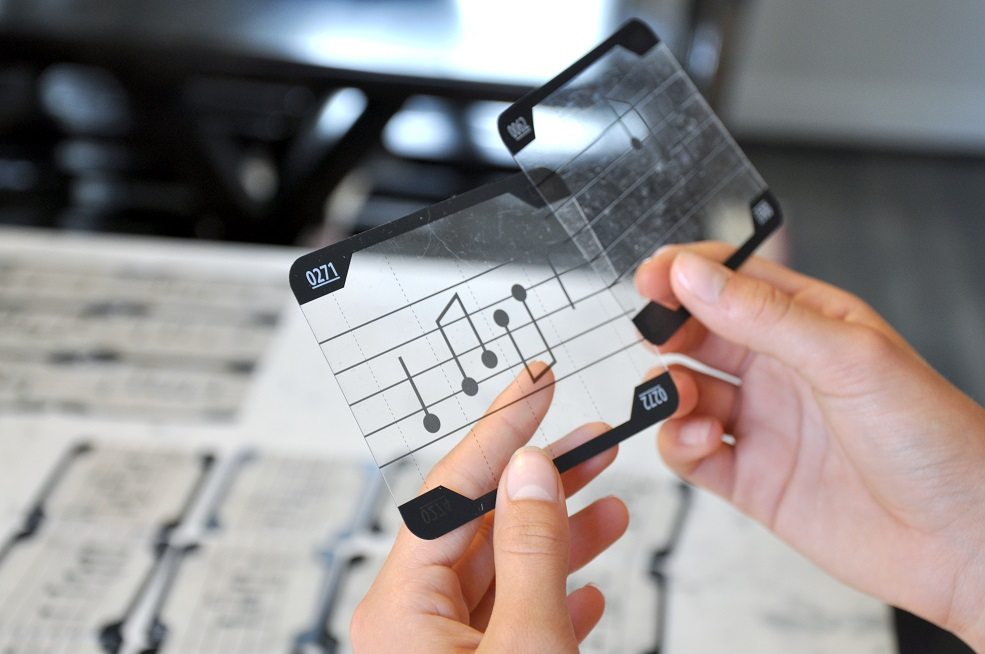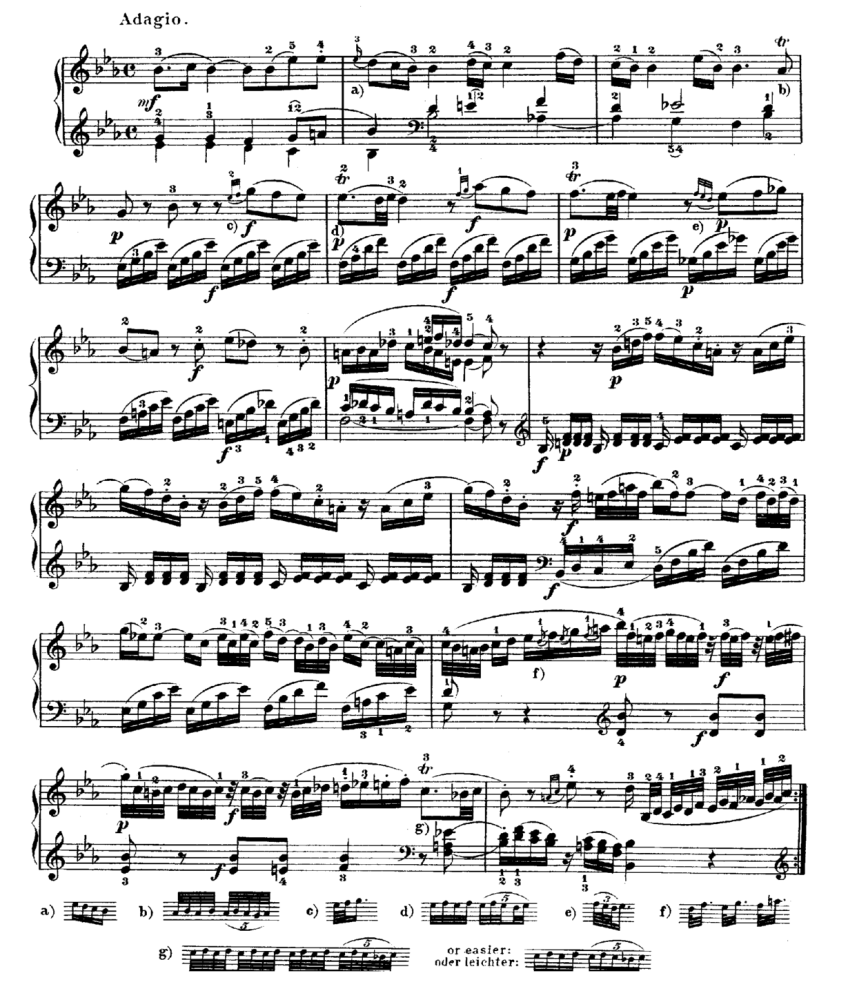There’s no shortage of products on the market designed to help kids learn about music or play an instrument. They have varying degrees of success, but one of the trickiest things for young kids to learn, when it comes to music, is musical notation.
Music is often considered to be another language, and, if that’s the case, then our literacy in that language can be defined by our ability to read musical notes and piece together a composition. To be sure, when faced with something like this, anyone might break into a cold sweat.
But we all have to start somewhere. And if Mozart (above) is Shakespeare, then Compose Yourself is more like Dr. Seuss, helping kids discover and become aware of the sounds and patterns of the musical language.
Compose Yourself is an innovative new product from the good folks at ThinkFun. (We actually included it as one of our Top 10 highlights of this year’s Toy Fair.) Technically, it’s classified as a “game,” but it doesn’t really conform to what you might expect from a game. There’s no clear objective; there’s no competition. It’s something new altogether.
Created by world-famous composer, cellist, and advocate for music education Philip Sheppard as a way to inspire curiosity and interest in music, Compose Yourself offers a set of musical “building bricks” that encourage kids to play with music just as they would a construction kit.
Those “bricks” come in the form of 60 transparent cards, each of which shows the musical staff and a single bar of music. The notes represent four beats (using single, half, and quarter notes), and they have various arrangements.
Why are the cards transparent? That’s because each card effectively represents four distinct note patterns. You simply flip and rotate the cards to change the notes and the musical pattern they represent.
For example, let’s take a look at a single card. This is one of the simpler cards: four single notes. As card 71, those notes follow one progression. Turn it upside down, and card 72 has a different progression. Turn the card over, do the same thing, and cards 73 and 74 are also unique.
In this way, kids are able to see past the mystery and get a grasp on the visual patterns notes can take. They’re also able to see how relatively minor variations of where a note falls within the staff can have a profound effect on an entire bar or piece of music.
So, this is all fine and good, but what can kids actually do with these cards? I’m glad you asked. They can organize the cards in multiples of 4 to create their own melodies and then go on the Compose Yourself website to hear their compositions performed for them.
And lest you think those compositions might resemble an old NES game, think again. ThinkFun had each card (all four versions) performed both by world-famous percussionist Evelyn Glennie (on marimba) and a full symphony orchestra (recorded at Abbey Road Studios). The result is simply stunning.
Let’s return to that simple example above. I composed a piece using nothing but that one card. Through the magic of modern technology, here’s Evelyn Glennie playing my masterpiece…
Your browser does not support the audio element.
It’s immediately obvious that the “same” four notes actually sound quite different when flipped around and manipulated.
But let’s kick it up a notch. Here’s another card with all four variations.
Again, I composed a brief melody using nothing but this one card. Here’s that piece performed by a full orchestra…
Your browser does not support the audio element.
Now imagine the possibilities you could create with 30 different cards, times 4 different versions of each, in compositions of 4, 8, 12, or 16 cards. There are over 200 million melodies you can create.
By themselves, the cards have a novelty and a certain “neat” factor that will attract most kids (who are already somewhat attuned to music). However, the addition of the website and the ability to have your piece performed back to you by a full orchestra turn this product into something really special.
Not only does the website play back your composition in marimba, full orchestra, or both together, you can also download an mp3 of your piece (as I did above), print it out as sheet music, or share it via social media.
I should point out, if it wasn’t obvious already, that Compose Yourself doesn’t teach anything in a specific way. Notes aren’t named. There are no technical terms. There’s no theory. In that respect, kids won’t learn how to read music, per se, but they will get a fuller appreciation for how music is composed, how notes represent sounds, and how those sounds can be manipulated.
And by interacting with the cards, kids will naturally use a plethora of important skills, including creative thinking, spatial reasoning, memory, and expression.
As an unparalleled introduction to basic music theory and notation, Compose Yourself absolutely belongs in every music teacher’s toolkit. But it also merits a place in almost any household with children. For this price point, you simply can’t go wrong.
Podcast: Play in new window | Download (163.5KB)
Subscribe: RSS











I have to thank you for the efforts you’ve put in writing thnis site.
I’m hoping to view the same high-grade content by you in the future as well.
In fact, your creative writing abilities has motivated me to get
my very own site now 😉